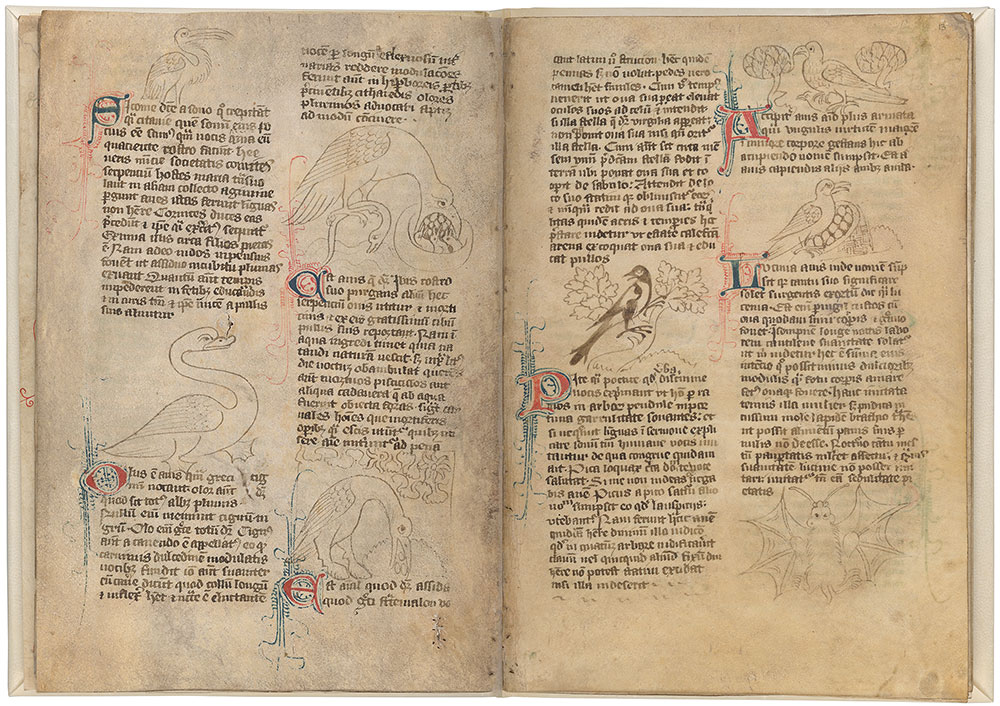MS M.890, fols. 12v–13r

Fountains Abbey bestiary
Gift of Alastair Bradley Martin, 1958
Left Page (Fol. 12v)
Stork: This drawing of a stork emphasizes the elongated beak that gives the bird its Latin name, ciconia: the loud clattering of its bill was thought to resemble chirping crickets (cicaniae).
Swan: The bestiary emphasizes the swan’s long curved neck, which enables its poignant song, but which is also a source of sinful pride.
Ibis: The ibis clenches a snake whose eggs it feeds to its chicks. Because it was thought to feed on snake eggs and carrion from the shore rather than enter the water, it signified carnal men who feed on sin, rather than redeeming themselves through baptismal waters.
Ostrich: The ostrich, shown with the hooves of a camel as described in the text, is burying its eggs in the sand. The bird was seen as an anti-model for the Christian faithful: a hypocrite so preoccupied with earthly distractions that it neglects its young.
Right Page (Fol. 13r)
Magpie: The black and white magpie shown with its beak open was known to imitate human speech; the bestiary both compares it to poets and it criticizes it for its rude chattering.
Hawk: The hawk is depicted clutching its prey in its talons. Accipiter, the Latin name for a hawk, means “taker,” which describes the hawk’s eagerness to snatch its prey.
Nightingale: The nightingale watches over her eggs, nestled close to her breast. The bestiary compares her maternal devotion to the virtuous woman who tirelessly provides for her children.
Bat: Although included with the birds, the bestiary notes that the bat, shown with membranous wings outstretched, gives birth to live young and eats with teeth, not a beak.